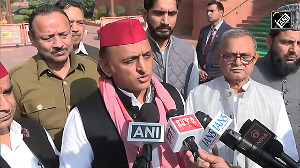Generally speaking, the more margin for error a strategy has, the more likely it is to succeed. When the room to err is small, mistakes threaten the stability of the system, requiring an immediate change in priorities from strategic objectives to crisis management.
On the other hand, when there is a large margin, unanticipated developments are not as big a threat. Corrections can be made without turning the focus away from the long-term objective.
At this point in time, the Indian macroeconomy finds itself in an enviable position. The configuration of monetary and fiscal parameters today provides an assurance of stability that is tantamount to a huge margin of error for new policy initiatives.
The combination of low inflation, low interest rates, tax buoyancy and a revival of public spending on infrastructure together signal a very high likelihood of a significant acceleration in growth. More so, because the situation we are seeing today is almost certainly not just the result of temporary factors.
To make the case for persistence more concrete, let's look at the behaviour of three key indicators. The proximate cause for the low interest rate regime is the progressive lowering of administered rates.
However, reinforcing this trend are two factors. One, the demand for credit by business appears to have gone through a dramatic change as a result of huge improvements in the efficiency of working capital management.
Two, with greater competition amongst financial intermediaries, as also the opportunity for public sector banks to restructure themselves, intermediation margins have come down. These two factors are not going to reverse themselves.
Yes, interest rates will still move up and down over the course of the business cycle, but their average level is permanently down from a few years ago.
These days, an inflation rate of 5 per cent triggers feelings of discomfort. This just goes to show how easily people accommodate low inflation and therefore resist very strongly to it going up again. But, underlying the initial impetus are intense competition and freer imports.
Together, they have put a tight lid on producers' ability to raise prices. Profitability now comes from lower costs, the result of both increased productivity and lower interest rates. Again, while plateauing is possible, reversal of both these trends is unlikely.
Looking at the fiscal deficit, the difficulty in reining it in from the revenue side is the result of two factors. One, we collect too high a proportion of our taxes from the industrial sector, so fiscal deterioration is a direct consequence of industrial sluggishness.
Two, we collect too small a proportion of our GDP as taxes. Both these can be addressed by the proposals for broad-basing and streamlining the revenue machinery that we have on the plate today.
But, more immediately, by reorienting public spending to the capital account, which immediately stimulates demand for industrial goods, the government is able to increase revenue collections.
Of course, lower interest rates help lower expenditure, as does lower inflation, which keeps employee costs in check. In short, even though the deficit is a problem, the factors driving it are generally moving in a favourable direction.
To reiterate the general point, it is that the macroeconomic environment is extremely conducive to a growth surge and, at least from the domestic side, there appear to be no significant risk factors on the horizon.
In most circumstances, these favourable conditions would provoke leadership to take bold initiatives, even risky ones, for precisely the reasons suggested at the beginning of this article.
But, going by the historical record, that is not what happens in India's economic policy.
There, radical change is only done in response to a crisis. While the macroeconomic situation is extremely hospitable as it stands, it cannot and will not lead to acceleration in and of itself.
It simply provides policymakers a huge margin of error for any new initiatives they might choose to take.
In that sense, it represents a significant opportunity for doing away with the several constraints that now stand in the way of faster and more sustainable growth.
Unfortunately, the record of policymakers in good times such as these is to bask in their glory; to do nothing that might rock the boat. If this is going to be the response this time around as well, particularly with the added justification of impending electoral considerations, then we will look back at this period as one of grossly wasted opportunities.
No economy, let alone one which is so far away from a reasonable average standard of living for its people, can afford to throw away the chance offered by the current buoyancy in the economy to implement some critical reforms that have been languishing between announcement and approval.
Let's again look at a few examples of this. From my perspective, labour market reforms are a top priority, because, without them, there isn't going to be broad-based employment growth.
One only has to look at the very impressive growth in the services sector, which is not bound by job security regulations, to see how significant a constraint this can be in industry.
What better time to announce the freeing of the labour market than at a time when the economy is booming? The probability of people finding jobs in the newly liberalised environment is far higher in current economic conditions than those that prevailed in the recent past. If that was the main argument against reform, how can it be allowed to stand now?
The rupee is appreciating after almost two decades of persistent decline against the dollar. Many people take pride in this, which I don't want to deny them. But, they should realise that a currency's strength is not based on whether it is 40 to the dollar or 100 to the dollar. It just does not matter what the specific value of the currency is.
The true strength of a currency is seen in the fact that the government has enough confidence to let its value be determined by the forces of demand and supply.
If one believes that the recent increase in inflows is more permanent than transitory, then the appropriate policy response is to match this structural change on the supply side of the forex equation with structural changes on the demand side. Simply put, the scope of convertibility must be significantly widened.
The essential point is that good times are as important an opportunity to make changes as bad times are. It is time to break free from the model of crisis-led reform and move to one of proactive and controllable change.
The writer is Chief Economist, CRISIL. The views expressed are personal





